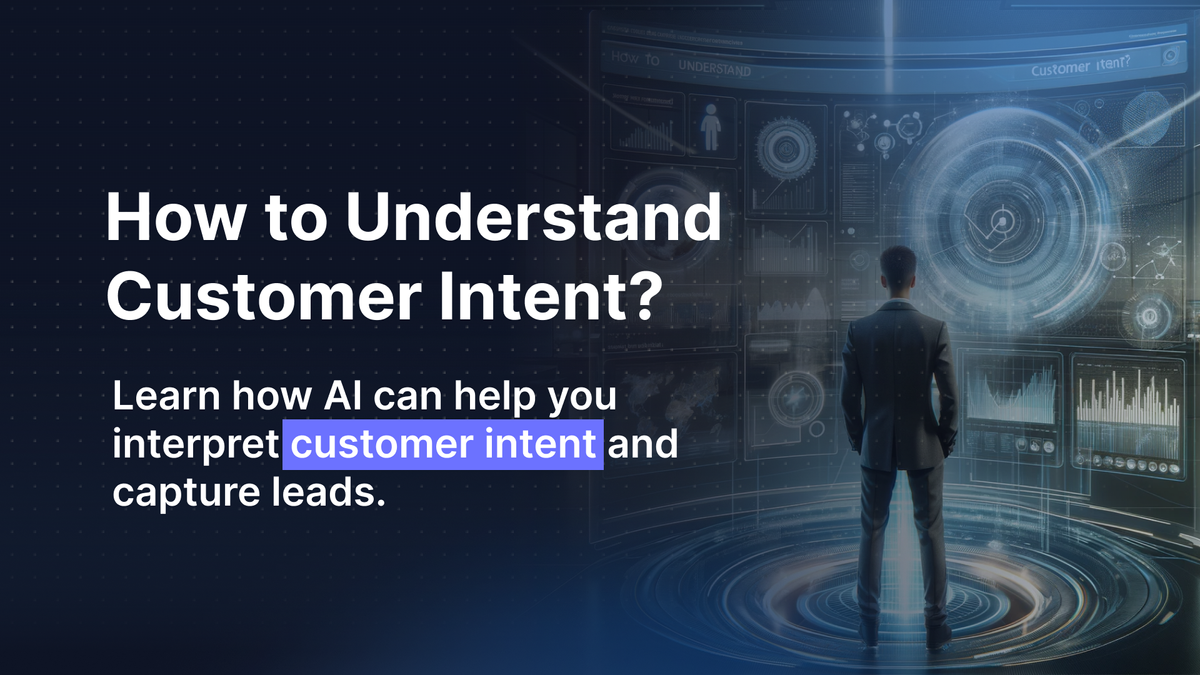Understanding customer intent can boost your business tremendously. Let’s lea...

Customer intent generally refers to the intent or purpose behind a customer's purchasing journey. Or you can understand it as why a customer chooses to interact with a brand.
However, In the digital world of E-commerce businesses and customer service, it means much more than just a call, chat, or an online purchase. A clear idea of customer intention can help you understand and classify what a customer is trying to communicate beyond words, whether a question about a product, a cry for help, or a heartfelt appreciation for your services.
Let's find out why customer intent holds so much importance. What are the best ways to detect and capture your customers' intentions and benefits?
So, What does intention mean in E-commerce? Customer Intent is one of the primary stages of a buyer's journey that needs proper attention and immediate response to be transferred into a successful conversion. Let's understand it better with an example:
Customer intent is critical for brands to understand their customers' needs, requirements, and pain points and create a high-performing business model. Ninety-nine percent of large corporations are using intent data to improve their businesses.

Here are some of the best and most feasible methods for you to track and capture customers' intentions and use them for making better business decisions:
Tracking your customer's engagement across various platforms is a holistic way to understand their true intentions. You can start by tracking:
As a rule of thumb, prospects engaging through multiple channels are more intent on buying from a business.
The simplest way to understand your customers' intent expression is to ask them directly through:
Another way to understand and act on your user intent is to add chatbots and live chat options across websites, social media, and mobile apps. A live chat widget is an excellent opportunity to engage with your visitors in real-time and understand their intent, preferences, and issues.
With AI-based chatbots, you can have an automated chat agent who can handle the visitors 24/7 and provide precise information speedily and accurately. Conversational chatbots can direct visitors to relevant product pages, create support tickets, and transfer the chat to an agent.
Imagine a customer entering a clothing store, checking out every single collection, and then leaving without purchasing to get the exact item from a competitor's outlet; sounds frustrating, right? Stay ahead of your competitors if you want to avoid that happening with your E-commerce business.
Check out how other brands are developing their presence to attract prospects. Analyze their content, format, CTAs, different page elements, and customer service to know your customer intent and apply it in your digital marketing.
A knowledge base (FAQs, tutorials, how-to guides, articles) acts as an internal search engine for your visitors. It's a treasure box of actual search queries that gives you in-depth information about what people want to see on your online platforms. It enables intent-based targeting by helping you to develop content around the most relevant queries to improve customer engagement.
A holistic understanding of customer behavior and engagement patterns enables businesses to accurately predict customers' intent and align their upcoming strategies with it. The process could be streamlined by tracking customer feedback, using AI-powered chatbots, analyzing competitors, and leveraging the knowledge base to gather insights into why a customer visits your platforms.

Here are some important areas where capturing user intention can help you maximize the return on your efforts:
Understanding your customer's intention helps you create and repurpose your content better. You can work on creating personalized, tailored, and customer-centric content that tackles your customers' pain points, answers their queries, and drives more sales.
For marketers, it's crucial to understand the intent behind user interactions. Almost 40 percent of organizations utilize more than half of their marketing budget on intent data. Intent-based marketing analyzes data referred from customer's behavior, interactions, and engagement patterns. These insights are then utilized to create advertisements and offers that resonate with customers and attract new prospects.
With customer intent data, you can spot which users will likely upgrade to higher plans or purchase additional products. It also indicates at-risk customers and addresses their concerns to reduce the churn rate.
Customer intent plays a key role in improving the SEO and visibility of a business. You can increase the chances of your content appearing in search engines through relevant keywords, Improve CTR, and decrease bounce rate through valuable content that satisfies users.
Customer intent could be complex to decipher. Most of the time, it is about getting to the desires and motivations they are not expressing explicitly. This is where AI support comes in. Aidbase is a leading AI support platform that helps you employ AI chatbot customer service in your business to track customer intent and analyze their queries and behavior patterns. These chatbots provide 24/7 customer support and help you with accurate customer insights to build a better customer experience.